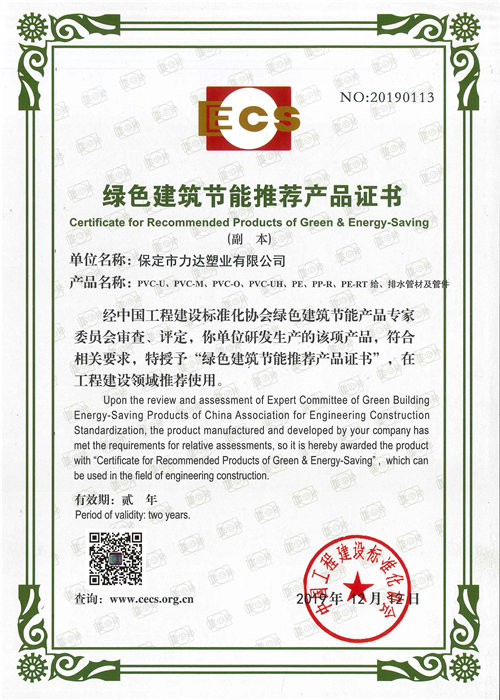okt . 11, 2024 04:27 Back to list
40mm waste pipe fittings
Understanding 40mm Waste Pipe Fittings A Comprehensive Guide
Waste pipes are critical components in any plumbing system, and selecting the right fittings is essential for maintaining an efficient drainage system. Among the various sizes of waste pipes available, 40mm waste pipe fittings are among the most commonly used, particularly in residential and light commercial applications. This article delves into the importance, types, and considerations for 40mm waste pipe fittings.
What are 40mm Waste Pipe Fittings?
40mm waste pipe fittings refer to the connectors, bends, traps, and other components designed to be used with 40mm diameter waste pipes. These pipes are typically employed for draining water from sinks, basins, and other fixtures. The fittings facilitate the secure and efficient connection of pipes, allowing wastewater to flow seamlessly towards the drainage system.
Importance of Quality Fittings
When it comes to plumbing, the quality of the fittings can significantly impact the overall performance of the waste system. High-quality 40mm waste pipe fittings ensure that joints are leak-proof and can withstand the pressures of regular use. Poor-quality fittings might lead to leaks, water damage, and costly repairs down the line. Therefore, investing in reputable brands and materials is essential for a long-lasting plumbing system.
Types of 40mm Waste Pipe Fittings
There are several types of fittings designed for 40mm waste pipes, each serving a specific purpose
1. Elbows Used to change the direction of the pipe, 40mm elbows are typically available in 90-degree and 45-degree angles. These fittings help navigate around obstacles and make routing easier.
2. Tee Fittings Tee fittings allow for the branching off of waste pipes into two directions. This is especially useful when connecting multiple waste outlets to a single drainage pipe.
3. Adapters These fittings are used to connect pipes of different diameters or to join different materials, such as plastic to metal. Adapters are crucial for ensuring compatibility in plumbing systems.
4. Traps A trap is installed under sinks and basins to prevent sewer gases from escaping into the home. The design of a trap creates a water seal, keeping odors at bay while still allowing wastewater to flow through.
5. Couplers Couplers are simple fittings used to connect two lengths of pipe together. They are essential for extending the reach of a plumbing system.
40mm waste pipe fittings

Materials Used in 40mm Waste Pipe Fittings
40mm waste pipe fittings are made from various materials, each with its own advantages. Common materials include
- PVC (Polyvinyl Chloride) Widely used due to its affordability, ease of installation, and durability. PVC fittings are resistant to corrosion and chemicals, making them ideal for waste systems.
- ABS (Acrylonitrile Butadiene Styrene) Known for its high resistance to impact and harsh temperatures, ABS is another popular choice for waste pipe fittings.
- Polypropylene This material is lightweight and has excellent chemical resistance. It is often used in more specialized applications.
Installation Considerations
When installing 40mm waste pipe fittings, proper technique is essential. Here are a few tips
1. Ensure Proper Measurements Always measure accurately before cutting pipes to ensure a snug fit with the fittings.
2. Use the Right Adhesives If using solvent cement for PVC or ABS fittings, follow the manufacturer's guidelines for application.
3. Check for Leaks After installation, run water through the system and check for any leaks. Addressing any issues promptly will save time and prevent damage.
4. Follow Local Codes Always adhere to local plumbing codes and regulations when installing waste pipe systems.
Conclusion
Understanding 40mm waste pipe fittings is essential for anyone involved in plumbing, whether you’re a professional plumber or a DIY enthusiast. By choosing quality fittings, understanding the types available, and ensuring proper installation, one can maintain a functional and efficient waste drainage system. Investing time in learning about these components will pay off in the long run, resulting in a reliable plumbing solution.
-
PVC Transparent Sheet Roll - Durable & Flexible PVC Plastic Sheet Roll for Industrial & Home Use
NewsJun.24,2025
-
High-Quality PVC PPR Pipes and Fittings Durable ERA PPR Solutions
NewsJun.10,2025
-
High-Quality Large HDPE Sheets & Large Diameter PVC Pipe Durable Large PVC Pipe Supplier
NewsJun.10,2025
-
High Density Polyethylene Cutting Board - Durable & Food Safe
NewsJun.09,2025
-
3 Inch PVC Pipe for Durable Irrigation Affordable & Reliable
NewsJun.09,2025
-
Premium PPR Plastic Water Pipe Fittings - Durable & Leak-Free
NewsJun.09,2025

